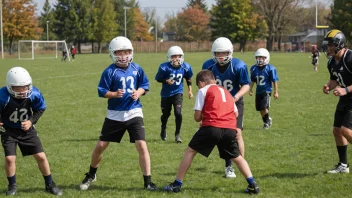Engaging in water sports is not just about mastering physical skills; it encompasses a variety of techniques that enhance performance and ensure safety. Among these techniques, proper breathing is paramount, as it can significantly influence an athlete's endurance, buoyancy, and overall experience in the water. Whether one is swimming, surfing, kayaking, or participating in any other water activity, the manner in which a person breathes can dictate their efficiency and success. This article delves into the significance of proper breathing techniques in water sports, exploring the physiological benefits, various methods tailored to different activities, and how athletes can implement these techniques to maximize their performance.
Understanding Breathing Physiology in Water Sports
To appreciate the importance of proper breathing techniques, it is essential to understand how our bodies function during physical exertion in water. When participating in water sports, the body requires an adequate supply of oxygen to maintain performance levels. As athletes exert themselves, their muscles consume oxygen at an increased rate, leading to a need for efficient oxygen exchange. Proper breathing techniques facilitate this process by ensuring that the lungs can effectively absorb oxygen and expel carbon dioxide, thereby preventing fatigue and enhancing endurance.
Optimizing Oxygen Intake
One of the most significant advantages of learning proper breathing techniques is the optimization of oxygen intake. In activities such as swimming, where the face is often submerged, mastering the timing of breath can help athletes maintain a rhythm that allows for consistent oxygen flow. Athletes should practice inhaling deeply through the mouth or nose when the head is above water and exhaling steadily while the head is submerged. This not only aids in maintaining buoyancy but also helps in establishing a stroke that is both efficient and effective.
Breathing Techniques Specific to Water Sports
Different water sports necessitate unique breathing techniques tailored to the demands of the activity. Here are some examples:
- Swimming: In swimming, mastering bilateral breathing can be beneficial. This involves breathing on both sides, allowing for better balance and symmetry in strokes. Swimmers should also practice rhythmic breathing patterns to correlate with their strokes, typically inhaling during arm recovery and exhaling when their face is in the water.
- Surfing: Proper breathing in surfing is critical, especially when managing wipeouts. Surfers should focus on taking deep breaths before diving under waves and exhaling slowly while underwater, which helps in controlling panic and conserving energy.
- Kayaking: In kayaking, proper breathing is essential for maintaining core stability and endurance. Kayakers should inhale deeply before making powerful strokes and exhale during the recovery phase to create a steady rhythm that conserves energy.
- Diving: For divers, mastering breath control is crucial for managing buoyancy and safety. Divers should practice taking slow, deep breaths to ensure a steady supply of oxygen and avoid hyperventilation, which can lead to dangerous situations underwater.
Breath Control and Anxiety Management
In addition to enhancing performance, proper breathing techniques can play a significant role in managing anxiety often associated with water sports. For many athletes, the fear of water or the anxiety of competition can lead to rapid, shallow breathing, which can impair performance. Practicing controlled breathing can help calm the mind and body, allowing athletes to focus on their technique and performance. Techniques like diaphragmatic breathing, where one breathes deeply into the diaphragm rather than the chest, can help reduce anxiety and promote a sense of calm.
Training to Improve Breathing Techniques
Developing proper breathing techniques requires practice and diligence. Here are some training tips to help athletes integrate effective breathing into their water sports routine:
- Breathing Exercises: Incorporate specific breathing exercises into your training regimen, such as inhaling for four counts, holding for four counts, and exhaling for four counts. This can help build lung capacity and improve breath control.
- Dryland Training: Engage in dryland exercises, such as yoga or Pilates, that emphasize breath control and awareness. These practices can enhance lung capacity and improve overall body control.
- Mindfulness Practices: Consider incorporating mindfulness practices such as meditation, which can help develop a greater awareness of breath and its impact on performance.
- Regular Drills: Implement breathing drills during water training sessions. For instance, swimmers can practice bilateral breathing drills to become more comfortable with different breathing patterns.
Conclusion
Proper breathing techniques are an essential component of success in water sports. By understanding the physiological benefits, implementing sport-specific breathing strategies, and cultivating breath control to manage anxiety, athletes can significantly enhance their performance while ensuring their safety in the water. As water sports continue to grow in popularity, mastering breathing techniques will not only contribute to individual success but also promote a more enjoyable and fulfilling experience in aquatic environments. Athletes should prioritize their breathing practices as much as they do their physical training to achieve optimal results in their water sports endeavors.






